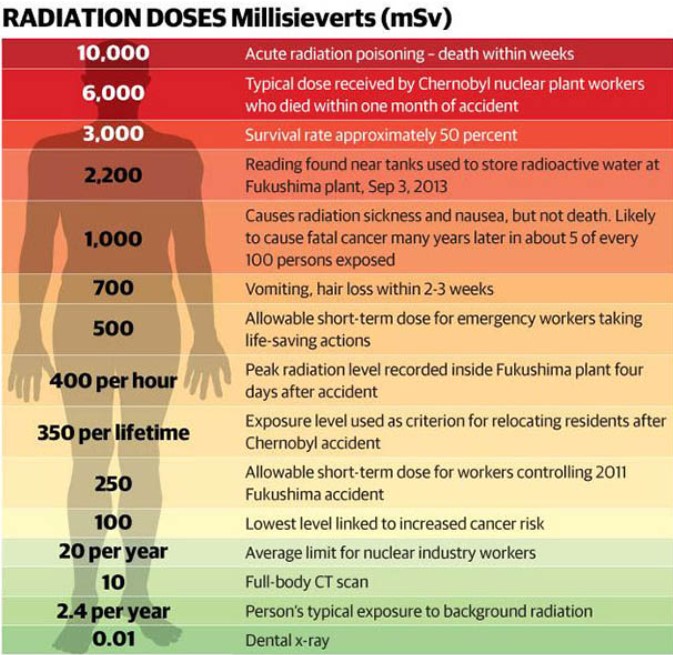Protection Expert For Developing Skills LLC.
Permissible and Hazardous Radiation Levels
Permissible and Hazardous Radiation Levels Understanding the Numbers and Their Impact Prepared and presented by Major General Ayman Sayed Al-Ahl The second article in a series on the potential nuclear scenario: A scientific study reveals the dimensions of radioactive risks and their regional impacts on the Arabian Gulf region https://px4d.com/alsynaryw-alnwwy-almhtml-drash-almyh-tkshf-abaad-almkhatr-alishaaayh-wtathyratha-aliqlymyh-lmntqh-alkhlyj-alarby Link to the first article: Iranian nuclear facilities: A map of potential risks https://px4d.com/the-series-delve-deeper-into-risks-and-solutions
Major General Ayman Sayed El-Ahl
6/14/20253 min read


Permissible and Hazardous Radiation Levels: Understanding the Numbers and Their Impact
Prepared and presented by Major General Ayman Sayed El-Ahl
The second article in a series on the potential nuclear scenario: A scientific study reveals the dimensions of radioactive risks and their regional impacts on the Arabian Gulf region https://px4d.com/alsynaryw-alnwwy-almhtml-drash-almyh-tkshf-abaad-almkhatr-alishaaayh-wtathyratha-aliqlymyh-lmntqh-alkhlyj-alarby
Link to the first article: Iranian nuclear facilities: A map of potential risks
https://px4d.com/the-series-delve-deeper-into-risks-and-solutions
## Introduction
In the context of any potential nuclear accident or radioactive release, understanding radiation levels and their effects on human health becomes critically important. Radiation, though a natural part of our environment, can become a severe hazard when exposed to high doses. This article aims to simplify concepts related to radiation doses, clarify levels considered permissible for various uses, and those that pose a direct threat to life and health, based on international scientific standards.
## Measuring Radiation: The Sievert
The effect of radiation on living tissues is measured in a unit called the Sievert (Sv). Since the doses humans typically receive are small, we often use sub-units such as the millisievert (mSv), where 1 Sievert = 1000 millisieverts. For comparison, the average radiation dose a human receives from natural sources (such as cosmic radiation and soil) typically ranges from 2 to 3 millisieverts annually.
## Permissible Radiation Exposure Levels
Regulatory bodies and international organizations, such as the International Atomic Energy Agency (IAEA), set strict limits for radiation exposure to protect the public and workers in fields involving radioactive materials:
* General Public: The maximum permissible annual radiation exposure limit for a member of the general public is typically 1 millisievert (1 mSv), in addition to natural background radiation. This limit aims to ensure that health risks from human activities involving radiation remain very low.
* Radiation Workers (Occupational): For individuals working in environments involving radiation exposure (such as nuclear power plants, hospitals, and research centers), the maximum permissible limit is higher, typically 20 millisieverts (20 mSv) annually, with an average of 100 millisieverts over five consecutive years. This limit reflects that these individuals receive special training and undergo regular health monitoring.
## Hazardous and Lethal Radiation Doses
Exposure to high levels of radiation can lead to Acute Radiation Syndrome (ARS) and increase the risk of long-term health effects such as cancer. The severity of these effects depends on the total dose received, the rate at which it was received, and the parts of the body exposed:
* 1-2 Sieverts (1000-2000 mSv): Mild symptoms of ARS, such as nausea, vomiting, and fatigue, may appear. Recovery is probable in most cases.
* 2-6 Sieverts (2000-6000 mSv): Moderate to severe ARS symptoms, including hair loss, fever, and infections. Significant bone marrow suppression occurs. Survival is possible with intensive medical intervention.
* 6-8 Sieverts (6000-8000 mSv): Very severe ARS, with a high probability of death within weeks even with intensive medical care.
* More than 8 Sieverts (more than 8000 mSv): Extremely severe ARS, almost always fatal within days or weeks, even with medical intervention.
* Lethal Dose 50/60 (LD50/60): This dose refers to the radiation level that would result in the death of 50% of the exposed population within 60 days. For humans, this dose is estimated to be around 3.5-5 Sieverts (3500-5000 mSv) without medical treatment.
Conclusion
Understanding these levels and the potential effects of radiation is vital for assessing risks in the event of a nuclear accident. While permissible levels aim to protect individuals under normal circumstances, exceeding these limits, especially at high doses, can lead to severe health consequences. These figures underscore the importance of effective emergency plans, rapid response capabilities, and the implementation of decontamination procedures to minimize exposure and protect lives in the event of any radioactive release. Awareness of these numbers represents the first line of defense against the challenges that potential nuclear scenarios may pose.
#الجمهور#NuclearScenario #NuclearRisks #NuclearSecurity #NuclearRadiation #CrisisManagement #NuclearSafety #NuclearFacilities #ScientificStudy #RiskAnalysis #ImpactOfGulfRadiation #IranNuclearRisks #GulfNuclearSecurity #GulfEmergencyPlans #GulfRadioactiveContamination #ArabianGulf #GulfSecurity #GulfCountries #SaudiArabia #Qatar #Bahrain #Emirates #Kuwait #Iran #MiddleEast #ProtectionExpert #MajorGeneralAymanSayedAlAhl
Safety and Security
Enhancing security through tailored training solutions.
Consulting
Training
info@px4d.com
+971-505650365
© 2025. All rights reserved.
CONTACT US
